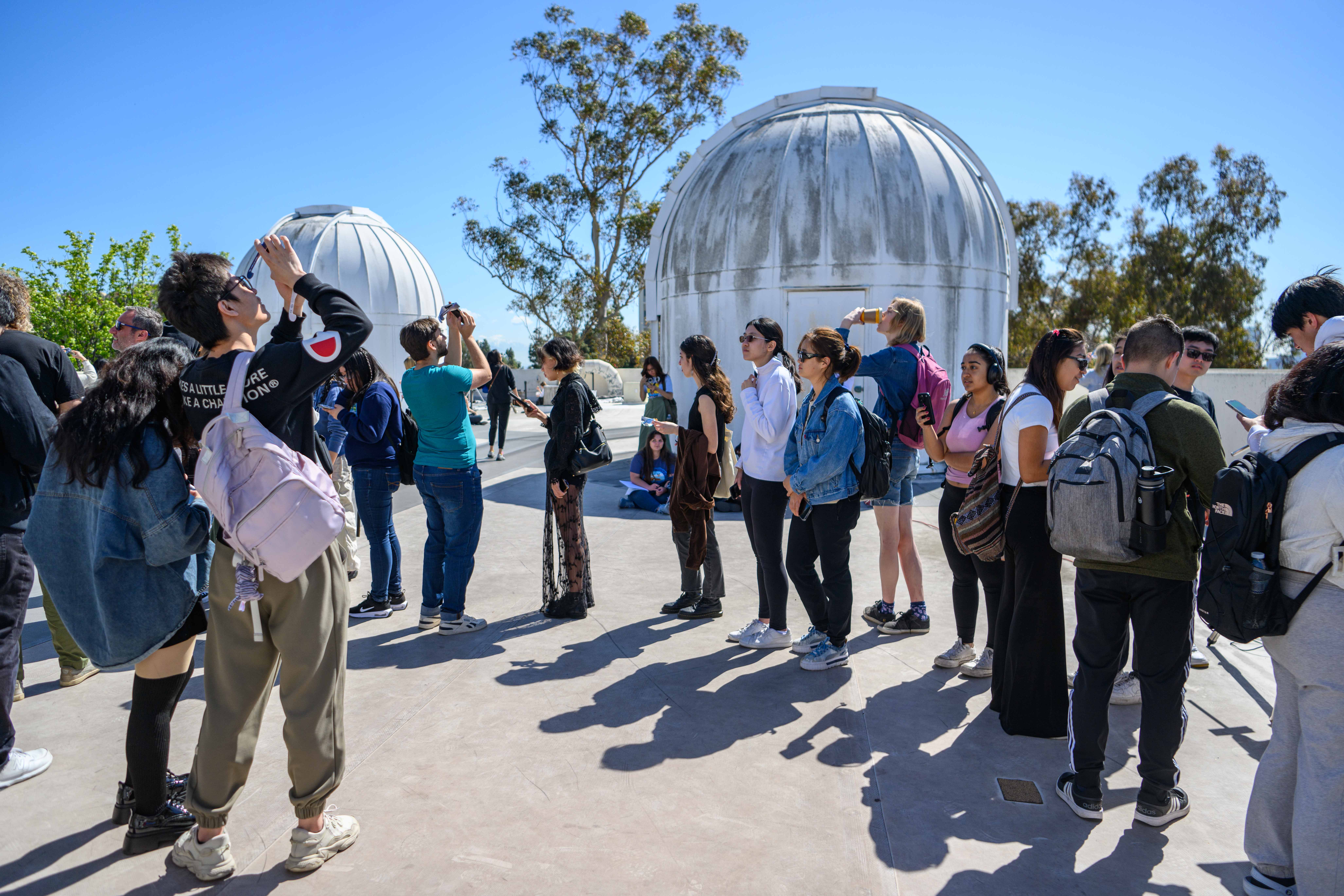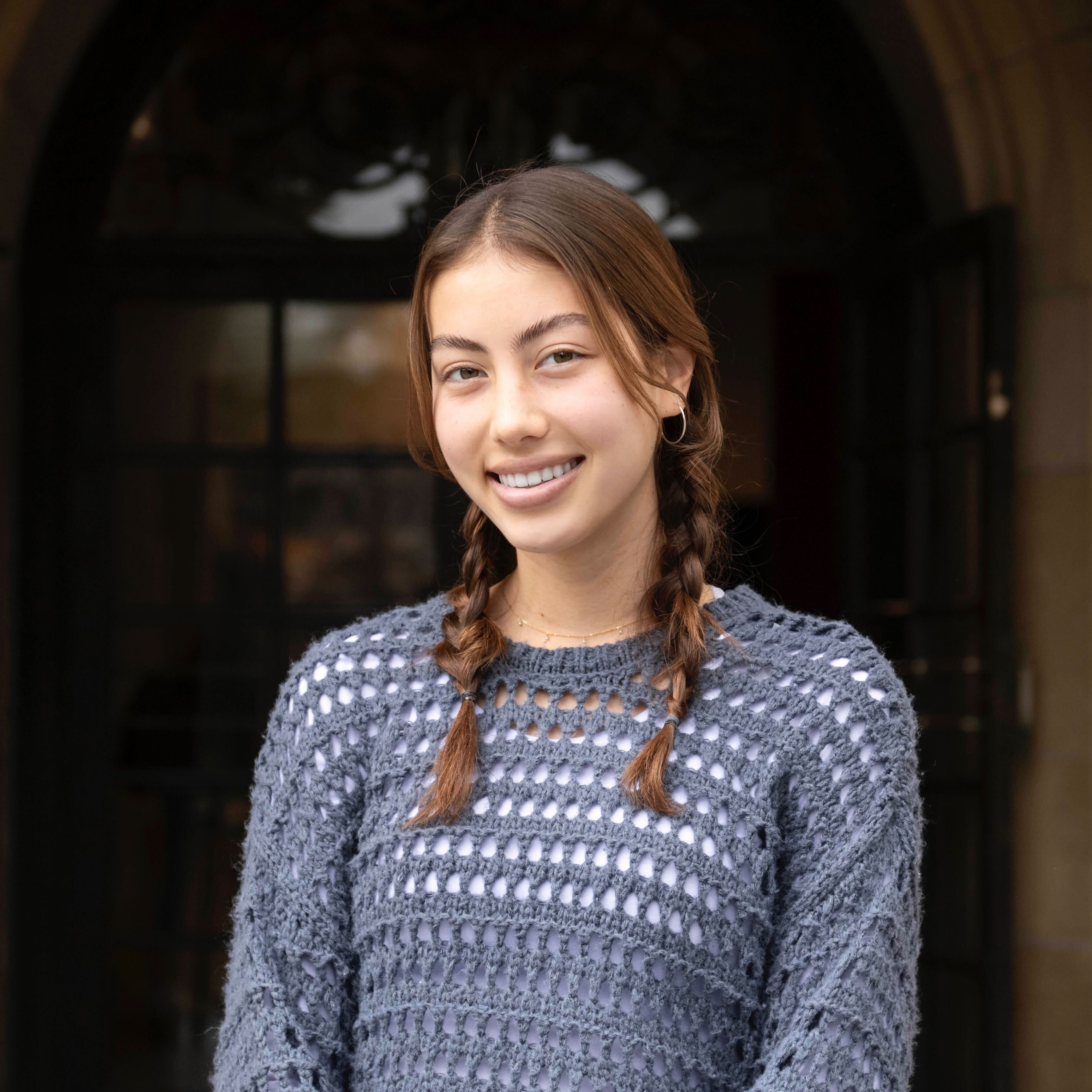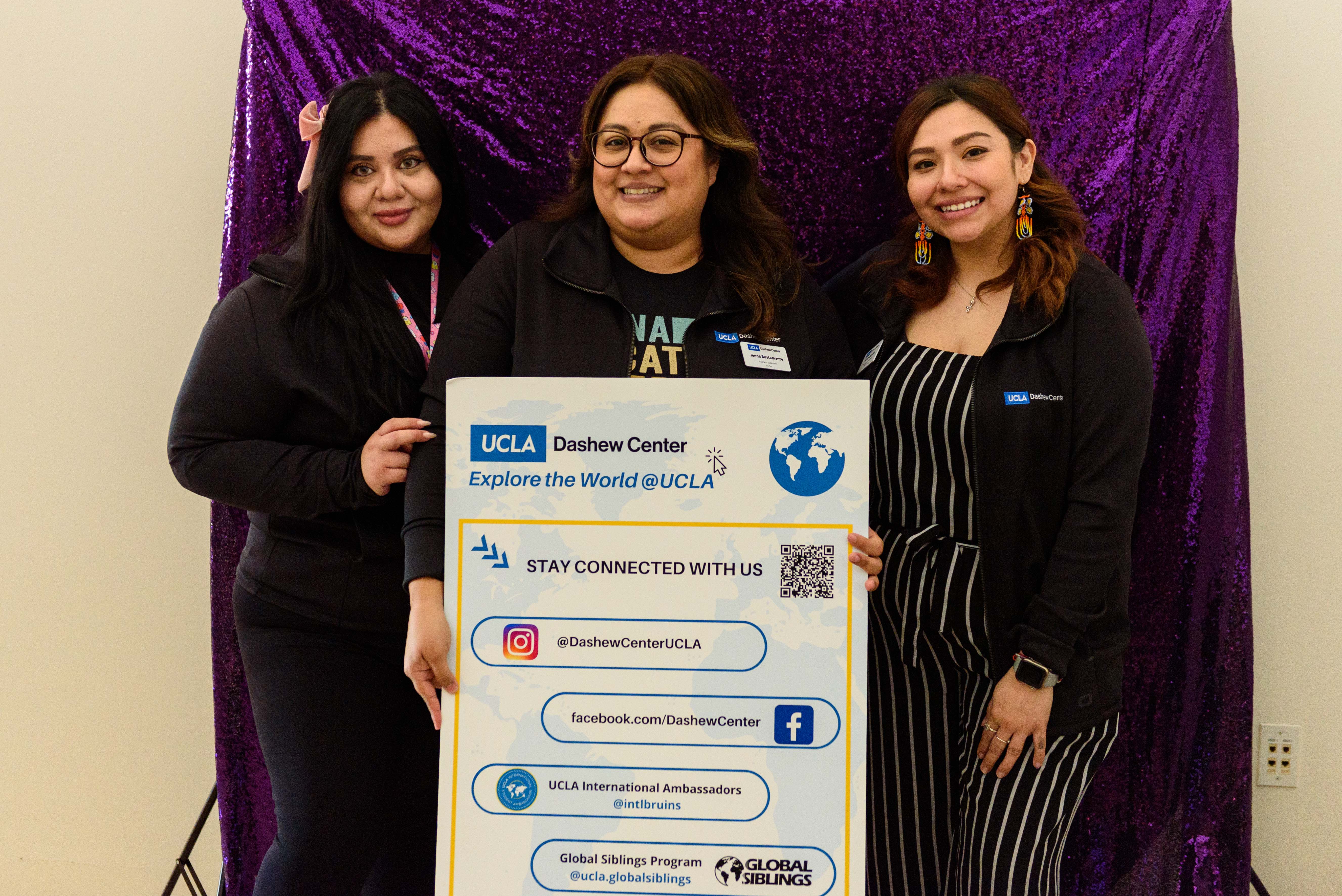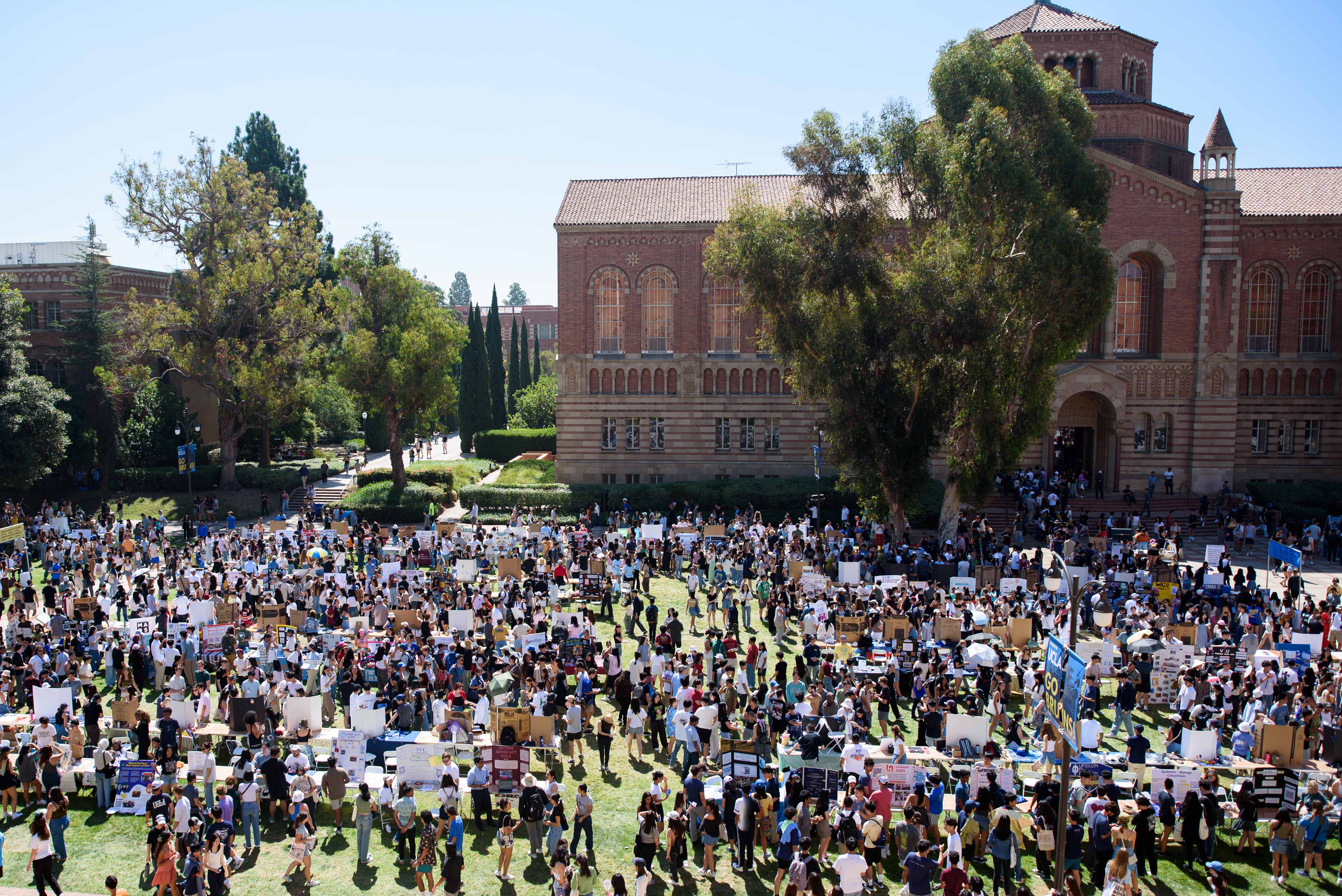A partial eclipse of the heart: Rare phenomenon allows Bruins to unite

Students and UCLA community members line up on the roof of the Math Sciences Building to catch a glimpse of the partial eclipse Monday. The Astronomical Society at UCLA hosted a watch party for the event, with eclipse glasses and solar telescopes available to help attendees look at the sun safely. (Nicolas Greamo/Daily Bruin senior staff)

By Lyah Fitzpatrick
April 14, 2024 7:35 p.m.
On any regular day, students rushing around campus look where they’re going or downward at their phones. But on Monday morning, everyone stood still and looked up – boxy glasses precariously perched on noses – to catch a glimpse of the partial solar eclipse.
While Angelenos only saw the moon cover about half of the sun, parts of the central and eastern United States experienced a total eclipse as the moon completely blocked out the sun – an event that will not occur again in America until 2044.
People huddled together in enthusiastic conversation, passing around eclipse glasses as what was left of the sun beat down through a cloudless sky.
To help students view the phenomenon safely, the Astronomical Society at UCLA hosted a watch party on the roof of the Mathematical Sciences Building with eclipse glasses and solar telescopes of various sizes. Dozens of students lined up to catch a clearer, redder view of the eclipse.
The organization hoped to provide a space for people to come together and meet others with similar interests, said Bethany Welch, a telescope operator for the club.
“Some people might think learning things about space isn’t as accessible usually, and maybe providing it in more of a social setting, you can show people that, ‘Hey, it’s totally cool to have this interest,’” said Welch, who is also a third-year astrophysics student. “It’s totally accessible if that’s something you want to pursue, and even if it’s just a hobby.”
Fourth-year design media arts student Patton Janssen said he heard about the viewing event through a friend, adding that he had never seen an eclipse before.
“It’s really fun to be here at Math Sci with everyone else, experiencing it with a whole group of people,” Janssen said.
Some UCLA community members went far beyond the campus boundaries to see the full eclipse. Jean-Luc Margot, a professor of Earth, planetary and space sciences as well as physics and astronomy, led a group of more than 60 UCLA alumni, family and friends to view the eclipse in Texas, where the total eclipse was visible.
Despite a gloomy forecast, the group caught a glimpse of totality and the sun’s corona – the star’s outer atmosphere, which produces a glowing ring effect during an eclipse – before the clouds rolled back in, Margot said.
“It wasn’t quite nighttime, but it was definitely a twilight type of darkness,” he said. “It’s strange, because it’s close to 2 p.m., and it’s almost completely dark.”
As totality set in, members of the group began to cheer, clap, laugh and shout. Margot said the group bonded through shared experiences and stories, adding that some may travel together to see other eclipses in the future.
Viewing the eclipse allowed people to appreciate the magnificence of nature, said Yan Sun, a volunteer with the Astronomical Society and a second-year astrophysics student. The fact that the moon is about the same apparent size as the sun, allowing the former to just barely cover the latter, is a complete and fascinating coincidence, Margot added.
Janssen said the event made him think about the scale of the universe.
“It has exceeded my expectations,” Janssen said. “I did not think I was going to be that impressed, but seeing it through the glasses was pretty badass.”






